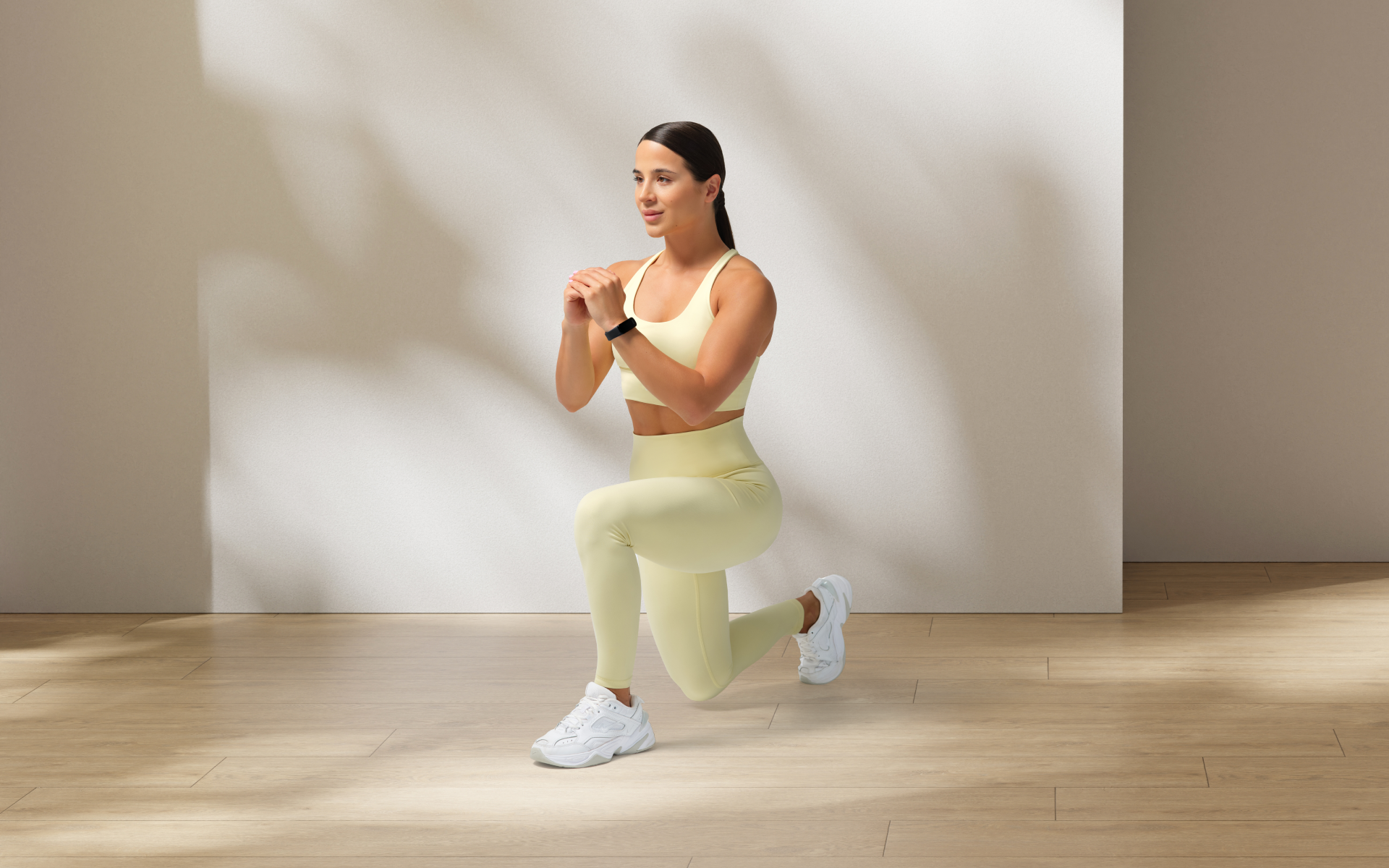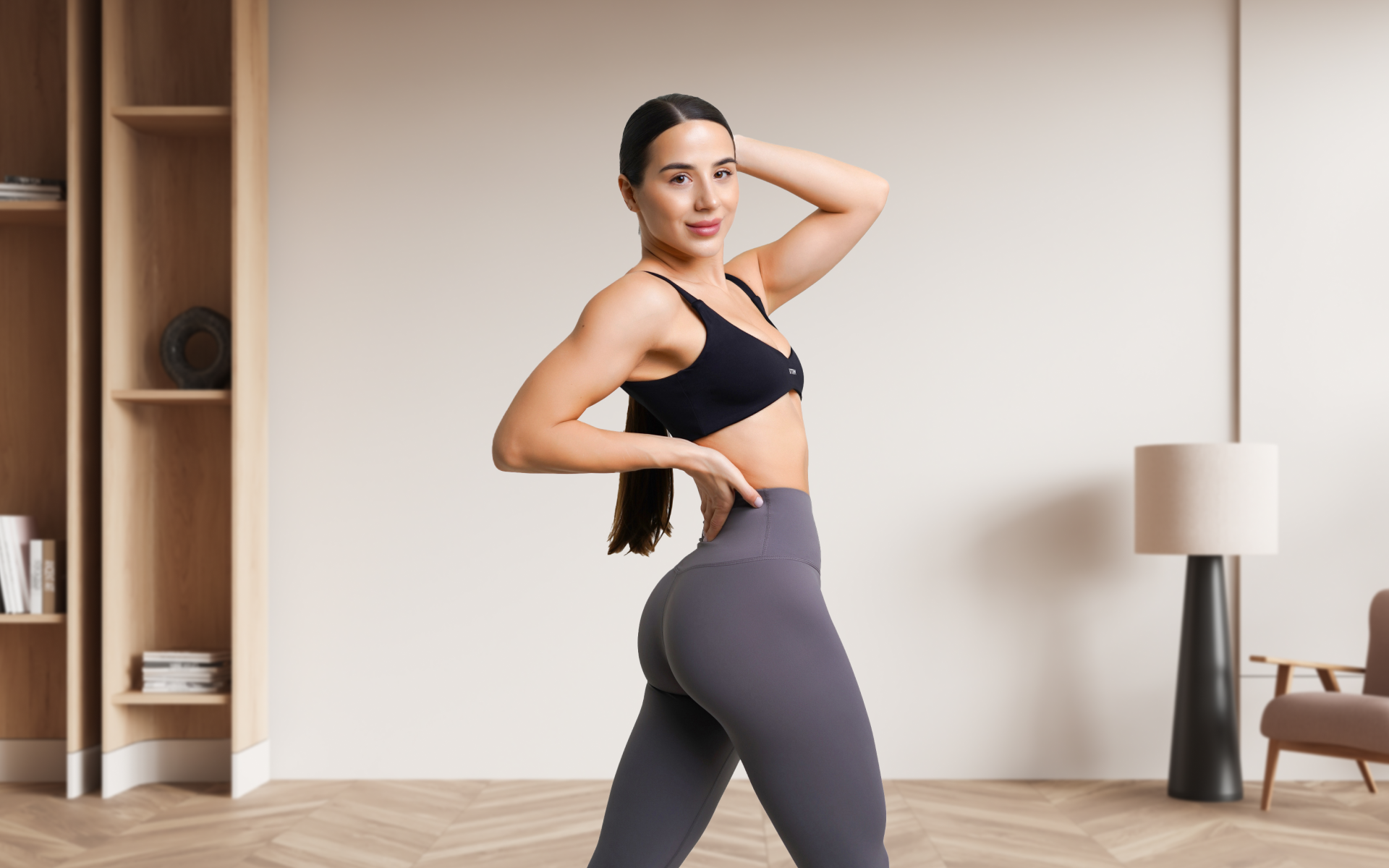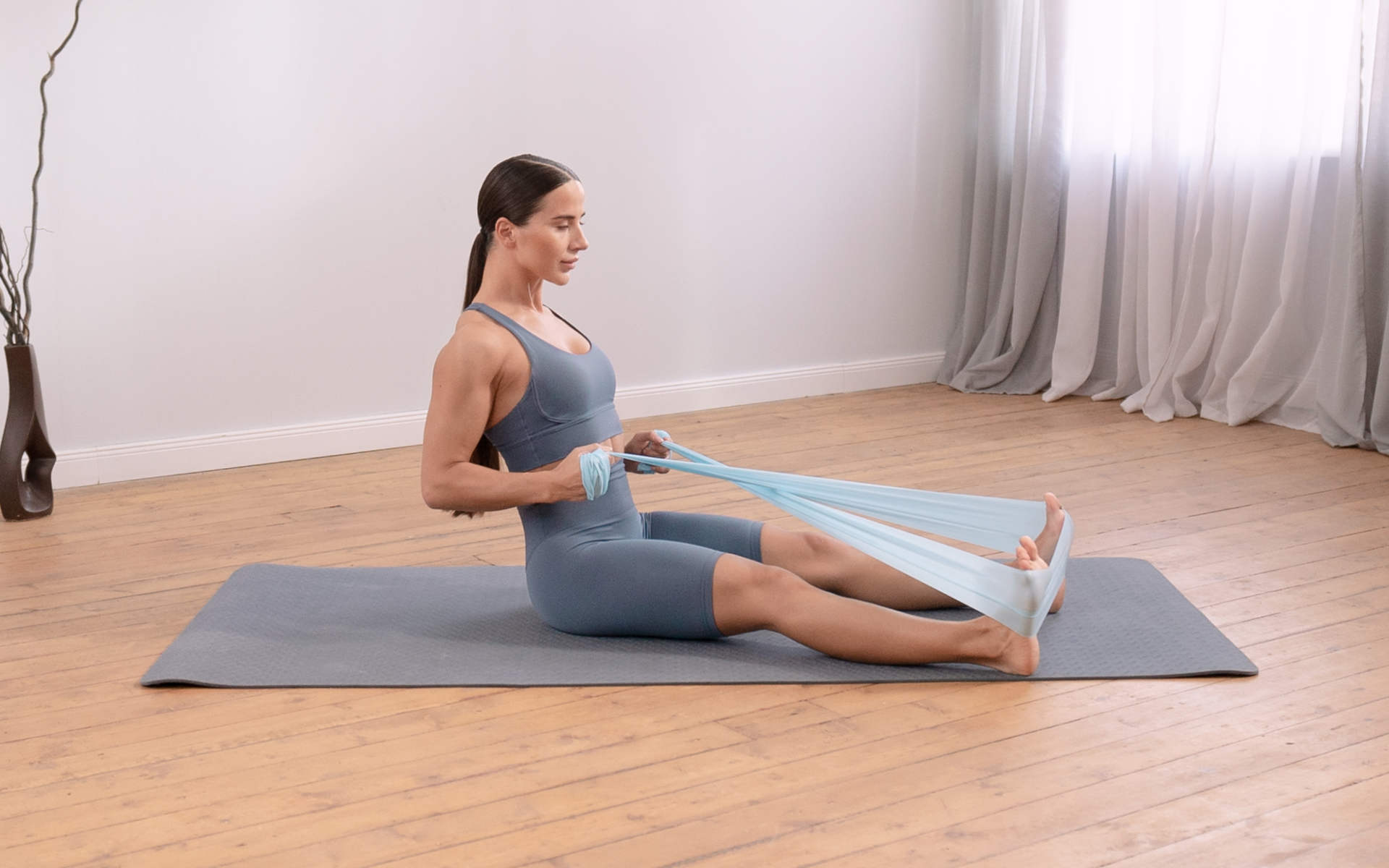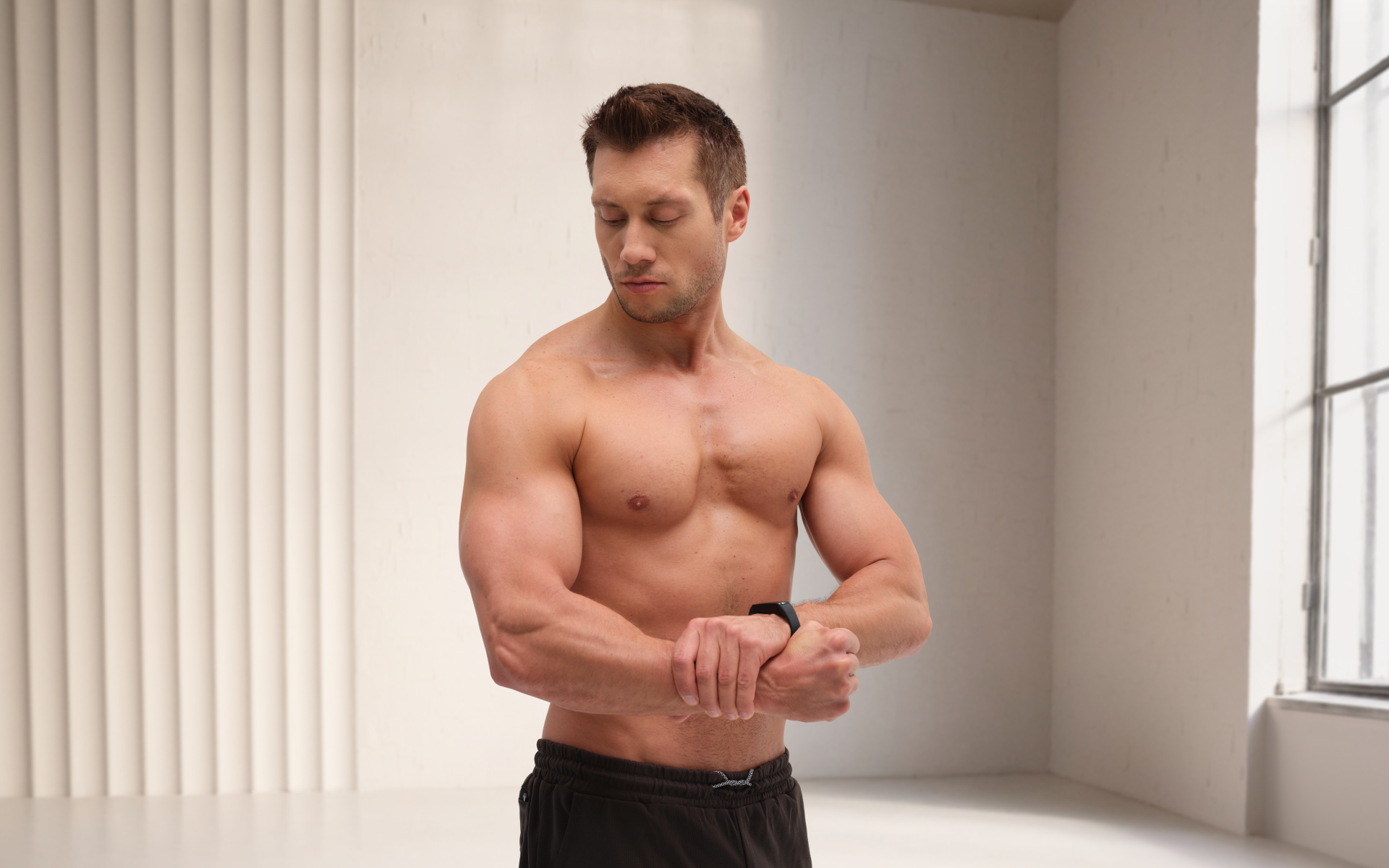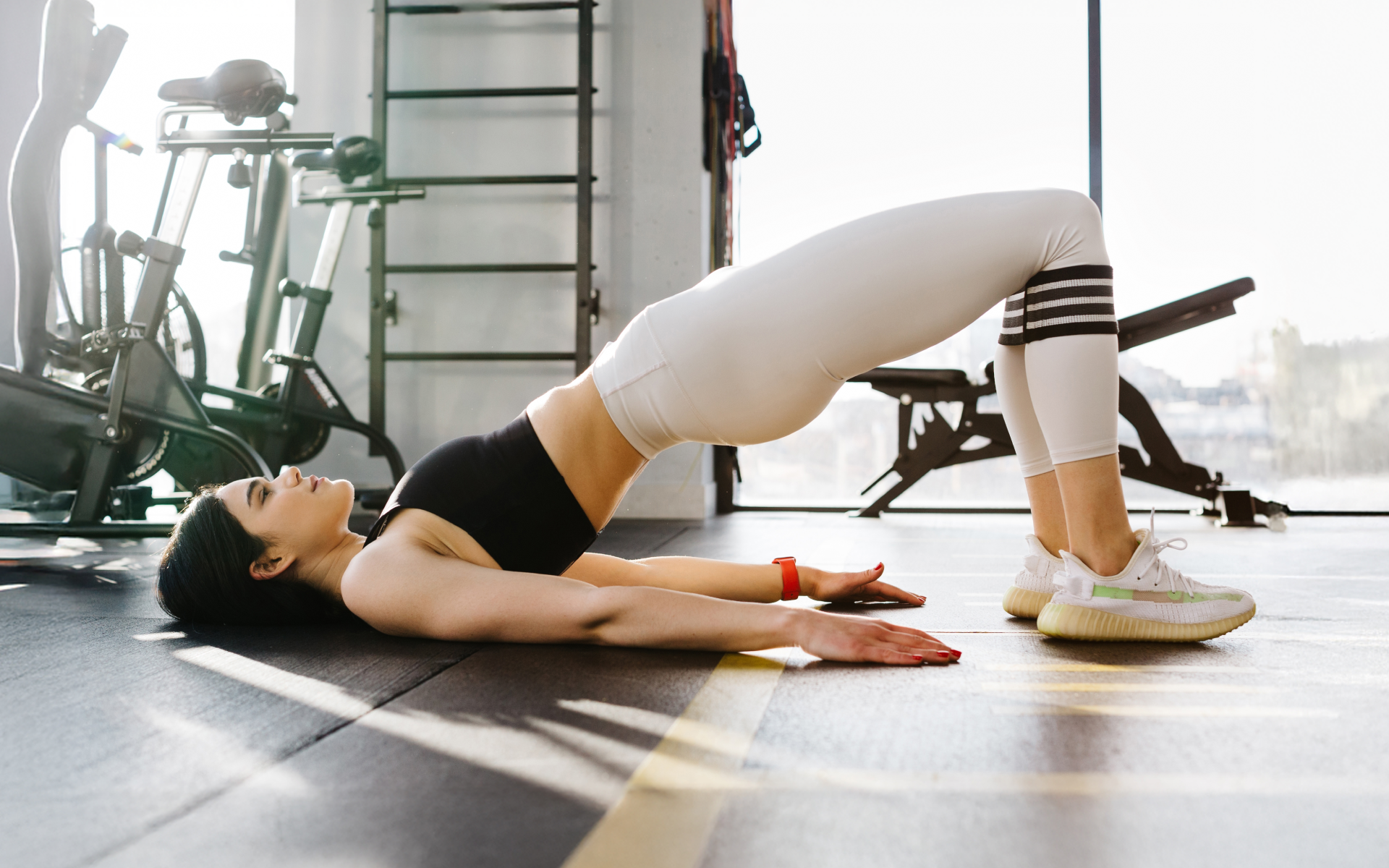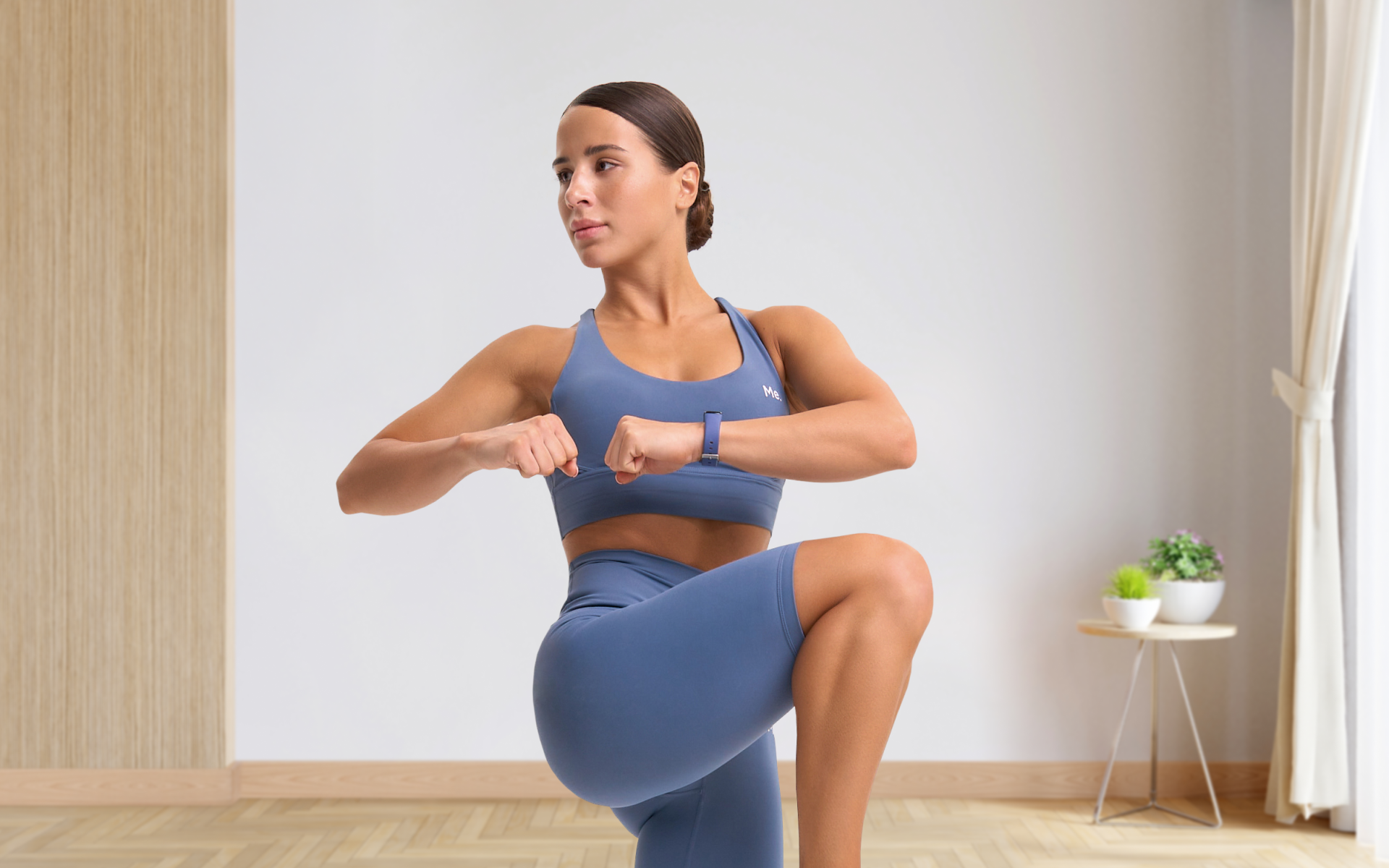Calisthenics strength training is a dynamic and versatile form of exercise that leverages your own body weight to provide resistance, which allows you to improve your strength and endurance with little to no equipment. This training modality is focused on building strength and offers numerous other benefits.
Practitioners often experience notable improvements in flexibility, endurance, and coordination. In addition, calisthenics promotes functional fitness, which translates to improved performance in everyday activities.
As calisthenics typically utilizes compound functional movement patterns that engage multiple large and small muscle groups simultaneously, it fosters an efficient, effective, balanced, and holistic approach to fitness. With its incredible accessibility and convenience, calisthenics training is an ideal choice for individuals who are looking for a comprehensive workout regimen.
Can You Build Strength with Calisthenics?
As with any type of strength training, you can certainly build strength with calisthenics, assuming your training is programmed effectively. Among other things, building strength is reliant on a principle called progressive overload. This refers to the process of gradually increasing the training stimulus in a way that promotes positive physiological adaptations.
With weight training, this can include adding resistance little by little as you become stronger. As calisthenics utilizes your own body weight as the resistance, this progression must occur more creatively through changes in training volume, intensity, training structure, and exercise advancements.
The ability to progress in calisthenics is truly a phenomenal physical feat, which is why advanced calisthenics practitioners are often some of the best athletes with excellent physiques and total body strength.
How Do I Start Strength Training Calisthenics?
The barrier to entry for calisthenics is low due to its accessibility. It can be performed without any equipment and in the comfort of your own home if you so choose.
While some individuals prefer to incorporate certain pieces of equipment to enhance their training options, it’s not a requirement. Some common equipment that people may find helpful on their calisthenics journey includes a pull-up bar, parallettes, dip bars, weight vest, resistance bands, jump rope, and an ab wheel. Again, none of these are required, especially for beginners.
Before you get started with your calisthenics training, it’s important to set clear intentions and have a plan in mind. Before you start, you should go through the following steps:
- Define your goals
- Structure your initial training plan based on your short- and long-term goals
- Gather/purchase equipment, if necessary
Intense sweat sessions, working weight loss tips, lip-smacking recipes come in one package with the BetterMe: Health Coaching app—all at your fingertips, start transforming your life now!
Define Your Goals
Defining your goals is an essential step for embarking on any new skill or endeavor. If you can’t determine your “why”, staying motivated is far more challenging and you’ll be less likely to stay committed.
When defining your goals, it’s important to consider both short- and long-term goals. The long-term goals are often the big picture and exciting ones to talk about, but in actuality, they’re composed of many short-term goals that gradually build on one another.
In addition, short-term goals provide you with the opportunity to experience multiple mini-wins along the way, which keeps you motivated and provides a clear outline of your progression.
- When writing your goals, it’s important to make sure they’re clear, specific, and realistic. Goals can of course be adjusted along the way, but without a proposed path, it’s challenging to get yourself to put in the hard work that’s required for positive change.
Structure Your Training Plan
Now that you’ve determined your short- and long-term goals, it’s time to create your first calisthenics training plan. It’s important to keep this first plan simple and achievable. Stick to the basic movement patterns, keep your workouts relatively short, and factor in adequate rest days.
A great place to start is to create a workout plan for one week. Schedule three workouts within the week, each being a 3-4 exercise full-body workout. You should plan for at least one rest day between each workout to provide adequate rest and recovery time.
Beginners are often overzealous when they start a new exercise program and try to do too much too soon. This leads to injury and burnout, which discourages beginners from continuing on their journey. Always start more slowly than you think you need to and build yourself up gradually.
Gather/Purchase Equipment (if necessary)
As previously stated, this step is completely optional. You can create a great beginner calisthenics program without a single piece of equipment. However, if you want to expand your exercise options, provide a little extra resistance or assistance, or simply make things a little more interesting, you should consider the following pieces of equipment:
- Pull-up bar
- Parallettes
- Dip bars
- Weight vest
- Resistance bands
- Jump rope
- Ab wheel
Read more on calisthenics equipment to understand your options.
Read more: Calisthenics Back Workout: Sculpt a Stronger Back
How Long Does it Take to Build Calisthenics Strength with Calisthenics?
The rate of strength gains in your calisthenics program will be dependent on your training structure and consistency, in addition to individual factors such as your diet, recovery, and genetics. Assuming you’re consistent and progressing your program appropriately, most people can expect to see their fastest improvement early on as their body adapts to the new form of training.
The improvements made in the first month of training will primarily be endurance and neuromuscular gains. Neuromuscular adaptations refer to your “mind-muscle” connection or your body’s ability to perform a movement with efficient muscle recruitment. This is why even though you will feel your strength has improved already by the 2nd week, you’ll not actually experience notable muscle changes in such a short time window. Rather, your body will have become more efficient at performing the exercises you’ve incorporated.
Endurance also improves quite quickly and you’ll probably notice that you don’t feel as fatigued at the end of your workouts after a few weeks.
Muscle strength and hypertrophy improvements will typically become more pronounced after 2 months of consistent training. During your first year of consistent training with proper progression, you’ll likely notice significant improvements in strength and endurance, but, unfortunately, these rapid gains will slow down over time as you get in better shape. It’s usually a much quicker path to go from a beginner to an intermediate calisthenics athlete than it is to go from an intermediate to an advanced one.
What are Some Common Calisthenics Exercises for Beginners?
The exercises incorporated by beginners should be basic movement patterns. This is because these movement patterns are the framework for every progression you’ll make as you get stronger. Even highly advanced exercises, such as handstand push-ups, planche, front lever, human flag, and muscle-ups, are simply a higher-level combination of the skills you must master as a beginner.
The exercises listed below aren’t meant to be an exhaustive list of every exercise that exists for beginners, but rather a starting point for some of the most common ones. Each of these exercises has numerous progressions and regressions depending on your fitness level. The exercises listed below encompass pushing, pulling, hinging, squatting, and axial rotation movements. This covers the basic human movement patterns (apart from gait).
Bodyweight Squat
Starting Position: Stand with your feet shoulder-width apart and your toes slightly turned out. Keep your chest up and your core engaged.
Lowering Phase: Bend your knees and hips, pushing your hips back as if sitting on a chair. Keep your weight on your heels.
Depth: Lower yourself until your thighs are parallel to the floor, or as low as you can comfortably go while maintaining good form.
Rising Phase: Push through your heels to return to the starting position, keeping your chest up and your core tight throughout the movement.
Repeat: Perform the desired number of repetitions.
Good Morning Exercise
Starting Position: Stand with your feet shoulder-width apart. Place your hands behind your head.
Hinge at the Hips: Keeping a slight bend in your knees, hinge at your hips, pushing them back while keeping your back straight.
Lowering Phase: Continue to hinge until your torso is almost parallel to the floor and you feel a stretch in your hamstrings.
Rising Phase: Reverse the movement by driving your hips forward and returning to the starting position.
Repeat: Perform the desired number of repetitions.
Whether you’re looking to simply pep up your fitness routine, jazz up your diet with mouth-watering low-calorie recipes or want to get your act together and significantly drop that number on your scale – BetterMe: Health Coaching app has got you covered! Improve your body and revamp your life!
Push-Up
Starting Position: Start in a plank position with your hands slightly wider than shoulder-width apart and your body in a straight line from head to heels.
Lowering Phase: Bend your elbows to lower your body toward the floor. Keeping your elbows tucked in close to your torso will result in greater muscle recruitment from the anterior deltoids, while allowing your elbows to come away from your sides (not higher than 70 degrees of shoulder abduction) will result in great muscle recruitment from the pectoralis major.
Depth: Lower until your chest almost or lightly touches the floor.
Rising Phase: Push through your hands to return to the starting position, maintaining a straight body line.
Repeat: Perform the desired number of repetitions.
Inverted Row
Note: This exercise requires a sturdy bar. If you don’t have something at home that can accomplish this, you’ll likely be able to find a setup that works at a local park.
Setup: Position a bar at waist height and lie underneath it. Grab the bar with an overhand grip, your hands slightly wider than shoulder-width apart.
Starting Position: Extend your legs and keep your body in a straight line from head to heels.
Pulling Phase: Pull your chest toward the bar by bending your elbows and squeezing your shoulder blades together.
Top Position: Pause briefly when your chest touches the bar.
Lowering Phase: Slowly lower yourself back to the starting position.
Repeat: Perform the desired number of repetitions.
Bicycle Crunches
Starting Position: Lie on your back with your hands behind your head and your legs lifted, knees bent at a 90-degree angle.
Crunch and Twist: Lift your shoulders off the mat and twist your torso to bring your right elbow toward your left knee while extending your right leg.
Alternate Sides: Switch sides, bringing your left elbow toward your right knee while extending your left leg.
Continuous Motion: Continue alternating sides in a pedaling motion.
Repeat: Perform the desired number of repetitions.
How Many Reps for Strength Calisthenics?
According to the National Association of Sports Medicine (NASM), the optimal volume and intensity for improving muscular strength is 4-6 sets of 1-5 reps at 85-100% of your one-rep maximum for that exercise. This should be accompanied by 3-5 minutes of rest between sets. However, for hypertrophy (muscle growth), the NASM recommends 3-5 sets of 6-12 reps of each exercise at 75-85% of your one-rep maximum for that exercise. This is with 60-90 seconds of rest between each set (3).
Guidelines like this are helpful as a general programming guide, but that’s not to say that you won’t experience significant strength gains at higher repetition ranges or lower intensities. Similarly, research has suggested that you can see notable improvements in much higher rep ranges and much lower intensities than this guideline. However, finding exercise variations you can perform with proper form and bring you to 85-100% of your one-rep max without the addition of external resistance may be challenging. If strength is your main goal, it’s best to keep your repetition ranges somewhere in the strength or hypertrophy range (1-12 reps) and at an intensity that’s high enough to make the last 1-2 reps of each set very challenging (either very close to or up to muscle failure).
Read more: Best Calisthenics Program for Total Body Fitness
Can I Do Both Gym and Calisthenics?
Yes, a mix of traditional weight training and calisthenics is a great way to gain the benefits of both modes of strength training. Many people incorporate both weighted and body weight exercises and experience excellent results.
Just make sure you balance your overall training load in a way that allows for adequate rest and recovery.
FAQs
Is calisthenics harder than the gym?
Whether calisthenics or traditional weight training is “better” is dependent on your goals and preferences. If the price of a gym membership isn’t feasible, you have no gyms nearby, or you simply don’t enjoy the gym environment, then calisthenics will be better for you as you’re more likely to enjoy it and stick with it. On the other hand, traditional weight training offers more exercise options due to the ability to use free weights, cables, machines, and a variety of other equipment, in addition to performing calisthenic exercises to enhance or supplement your training. Progressive overload is typically easier to achieve through weight training as you can gradually and incrementally add resistance.
There’s not a single right answer to the question as both options can produce excellent results, so it ultimately comes down to your own preference. Many people incorporate some elements of both into their strength training routines.
What’s the best rest time for calisthenics?
The best rest time for calisthenics is dependent on your fitness level, type of exercise, and workout intensity. For example, for strength training at high intensities, you may need 3 – 5 minutes of rest between sets (4). If you’re completing high-intensity interval training (HIIT) at lower percentages of your one-rep max for each exercise, you’ll incorporate less rest time – typically a minute or less between sets or circuits.
The Bottom Line
It’s evident that calisthenics strength training involves a number of exercises that are suitable for different fitness levels and goals. If you’re a beginner and want to build your body strength, you need to choose the right type of workout to engage in. It’s also important to note that some calisthenics exercises involve challenging moves that may be difficult for beginners.
DISCLAIMER:
This article is intended for general informational purposes only and does not serve to address individual circumstances. It is not a substitute for professional advice or help and should not be relied on for making any kind of decision-making. Any action taken as a direct or indirect result of the information in this article is entirely at your own risk and is your sole responsibility.
BetterMe, its content staff, and its medical advisors accept no responsibility for inaccuracies, errors, misstatements, inconsistencies, or omissions and specifically disclaim any liability, loss or risk, personal, professional or otherwise, which may be incurred as a consequence, directly or indirectly, of the use and/or application of any content.
You should always seek the advice of your physician or other qualified health provider with any questions you may have regarding a medical condition or your specific situation. Never disregard professional medical advice or delay seeking it because of BetterMe content. If you suspect or think you may have a medical emergency, call your doctor.
SOURCES
- How Many Pull-Ups Should A Beginner Do? (n.d., umovesg.com).
- How to Do Bench Dips the Right Way (n.d., healthline.com).
- Hypertrophy Training vs. Strength Training: Pros and Cons (n.d., healthline.com).
- Rest Intervals Between Sets in Strength Training (2009, pubmed.ncbi.nlm.nih.gov).
- The Benefits of Burpees and How to Do Them (n.d., healthline.com).
- The Effect of Calisthenics Exercises on Body Composition in Soccer Players (2020, Cigerci, Ali Erdem & Genc, Harun).
- The Effects of Push-Up Training on Muscular Strength and Muscular Endurance (2018, Hassan, Sadzali).




